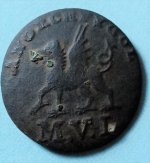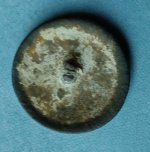ott
Jr. Member
Hello,
Please could anyone identify my recent detecting find.
The wording from what I can make out reads - ANORCH **YGOL
M.V.L
My first thoughts were maybe a Volunteer militia
The button measures approx. 18mm
Please could anyone identify my recent detecting find.
The wording from what I can make out reads - ANORCH **YGOL
M.V.L
My first thoughts were maybe a Volunteer militia
The button measures approx. 18mm









